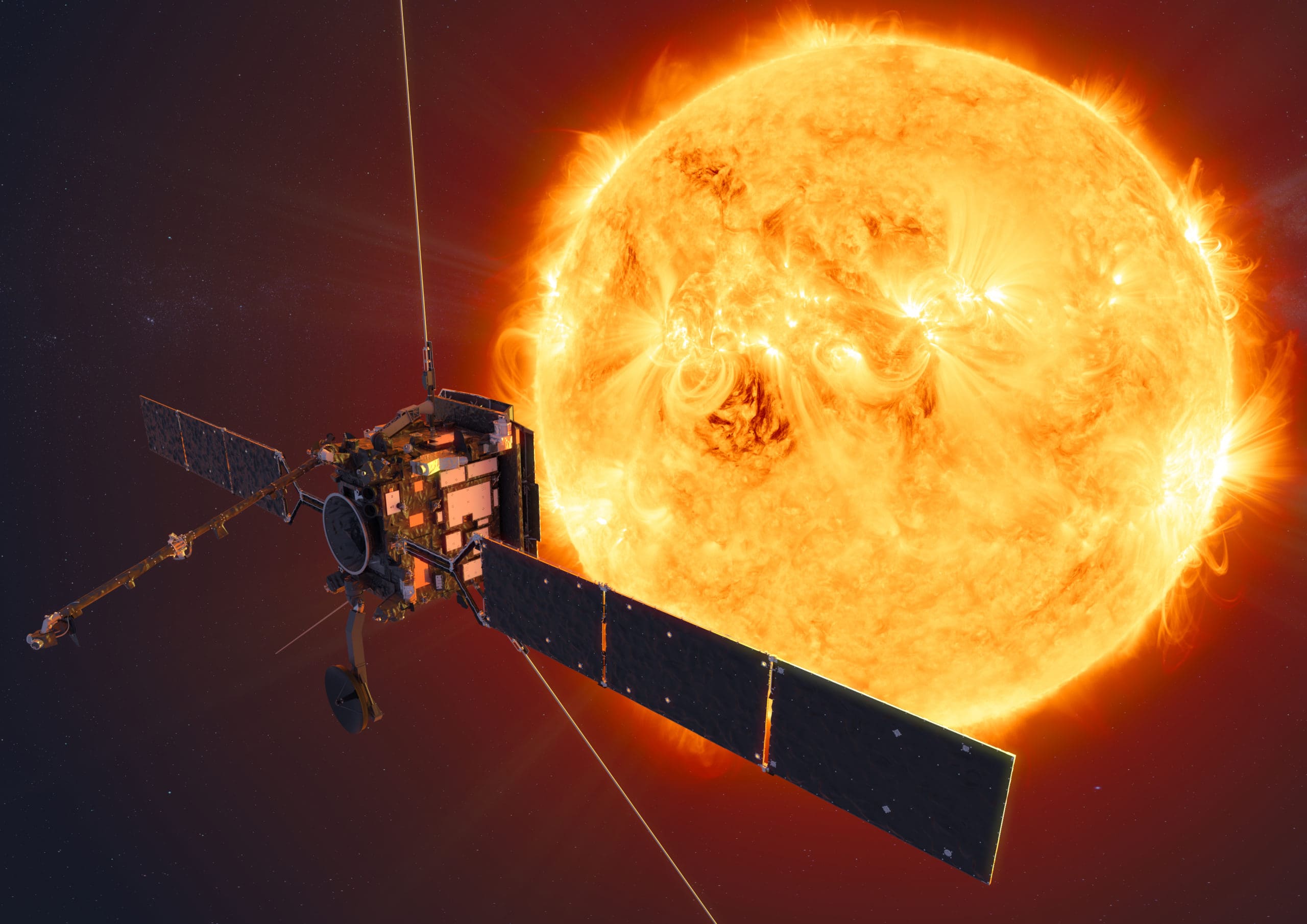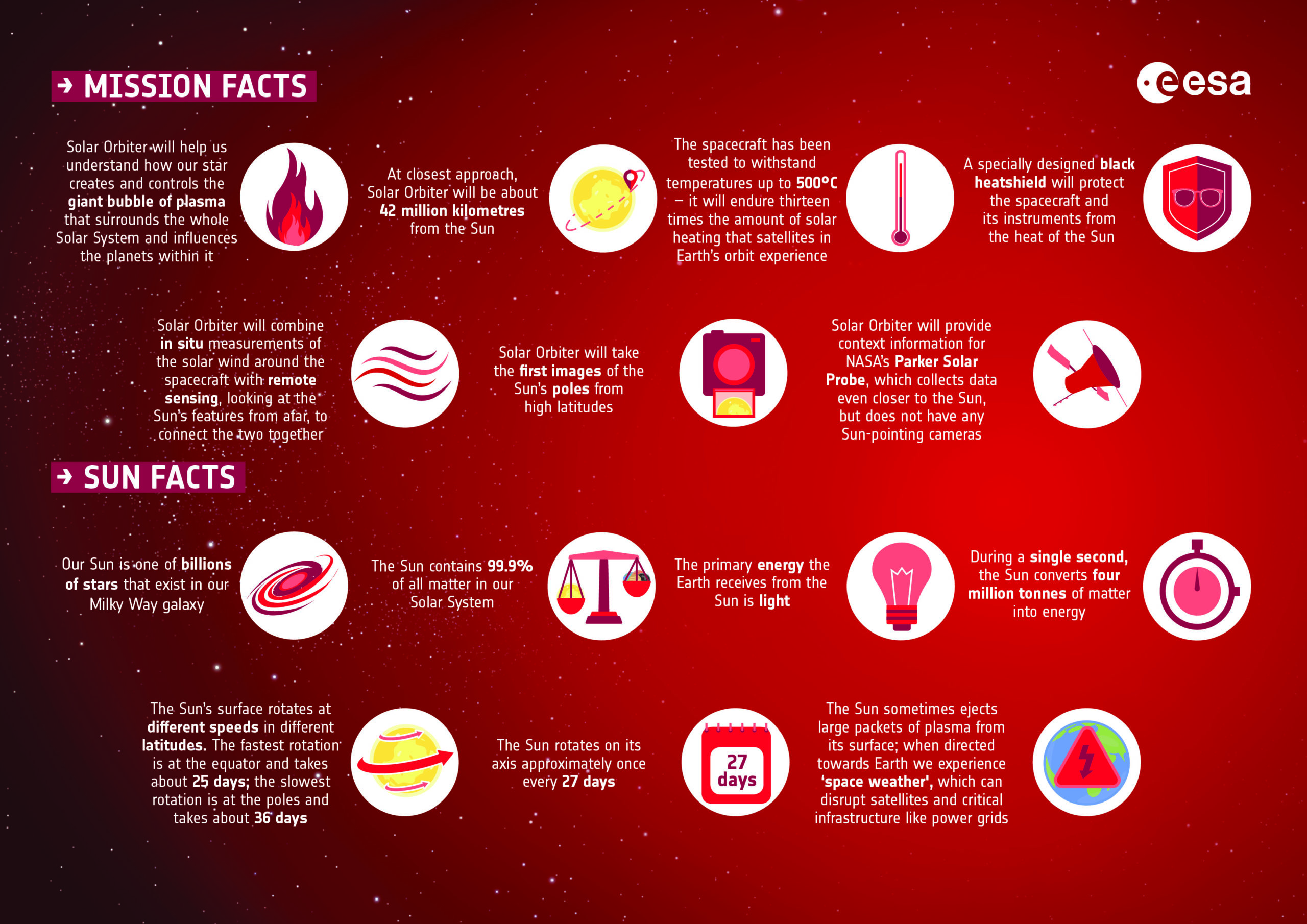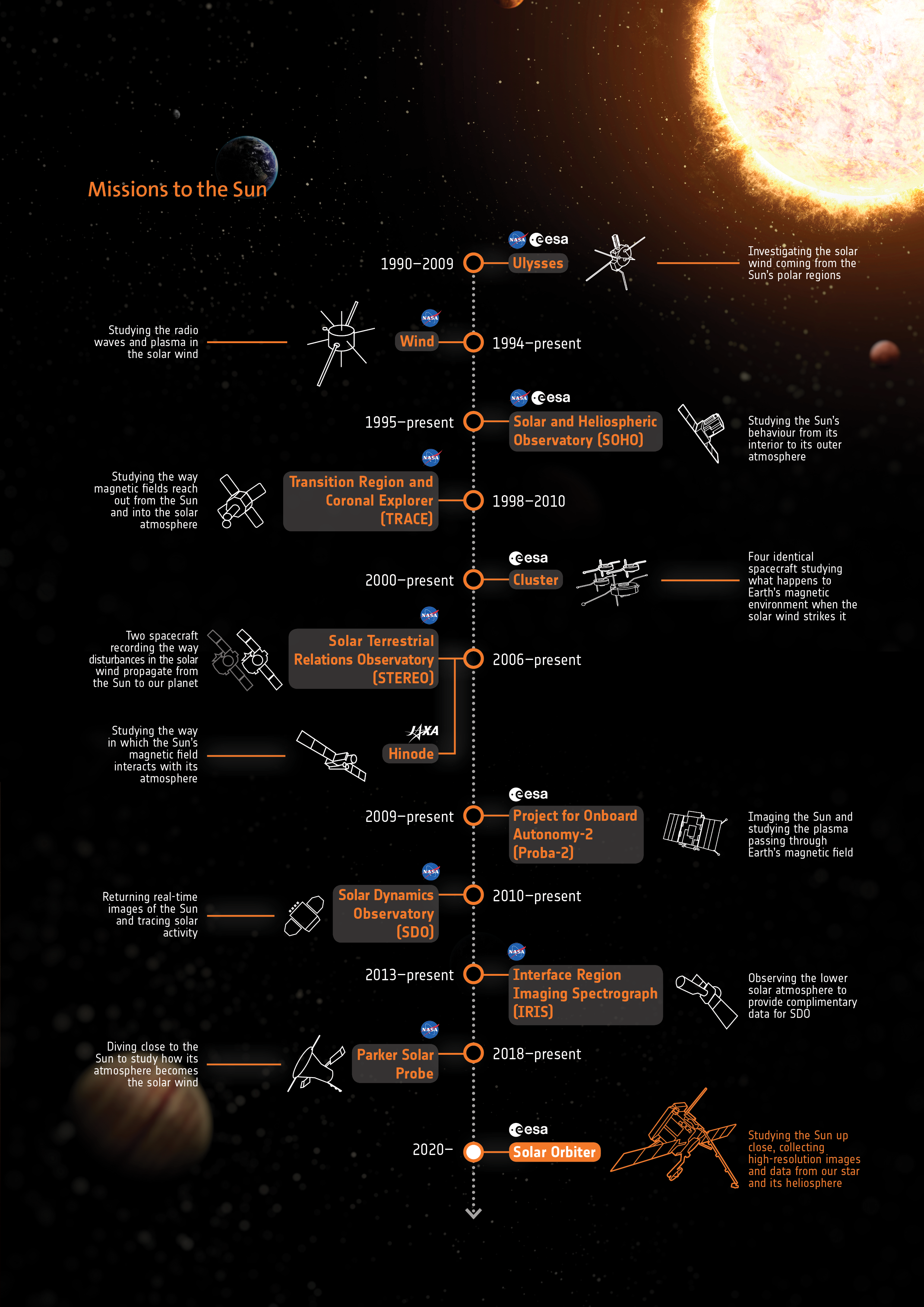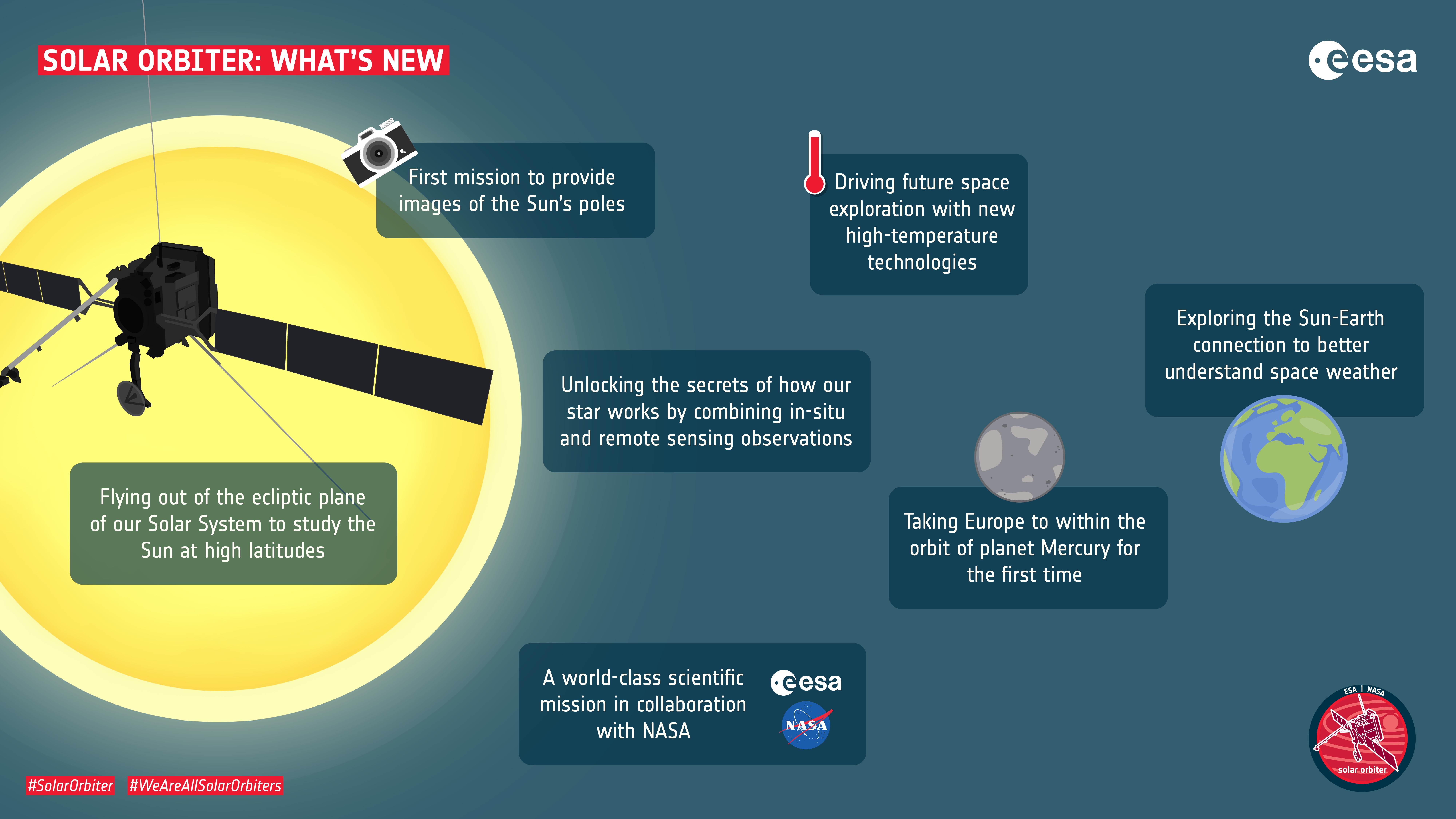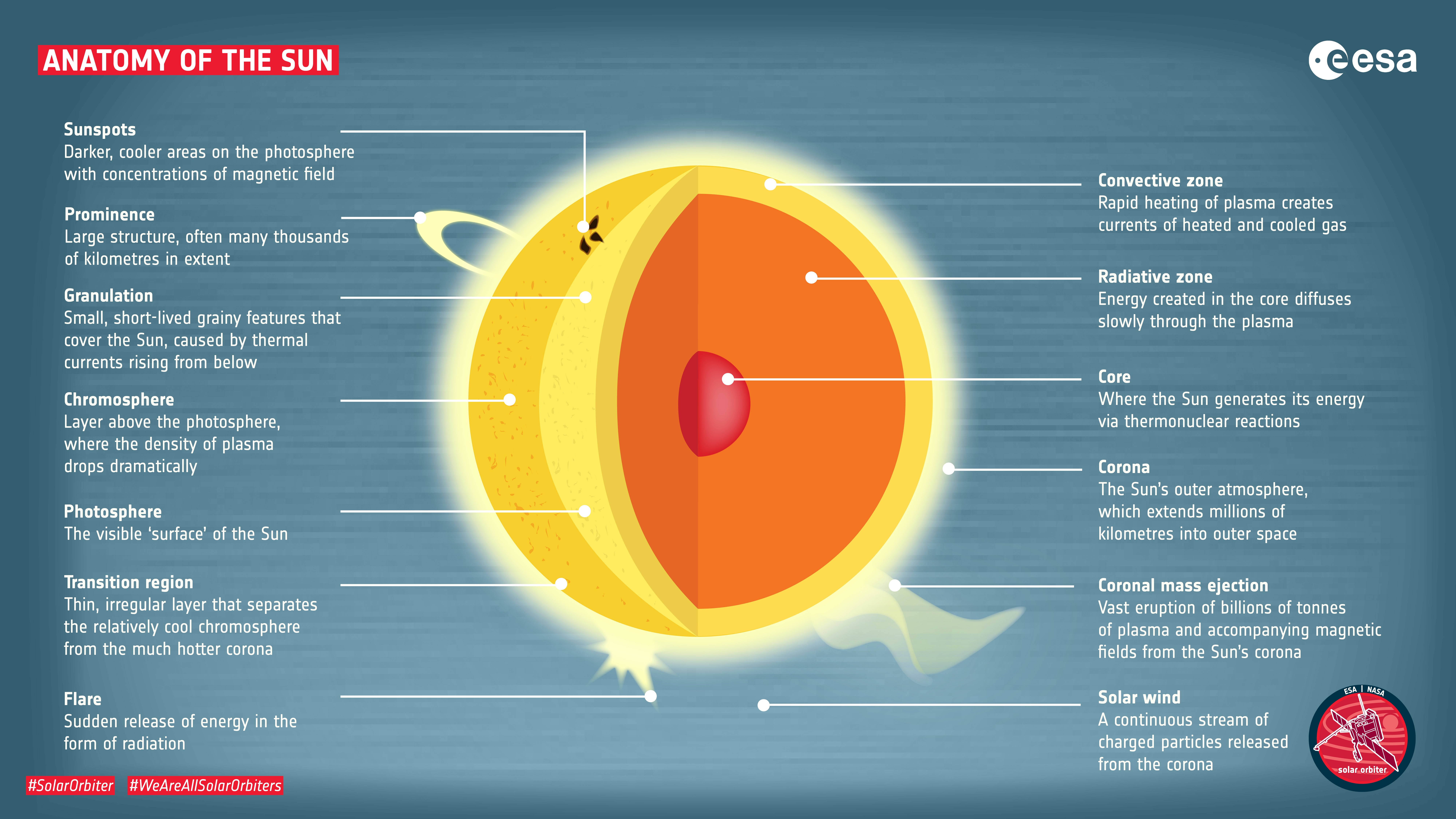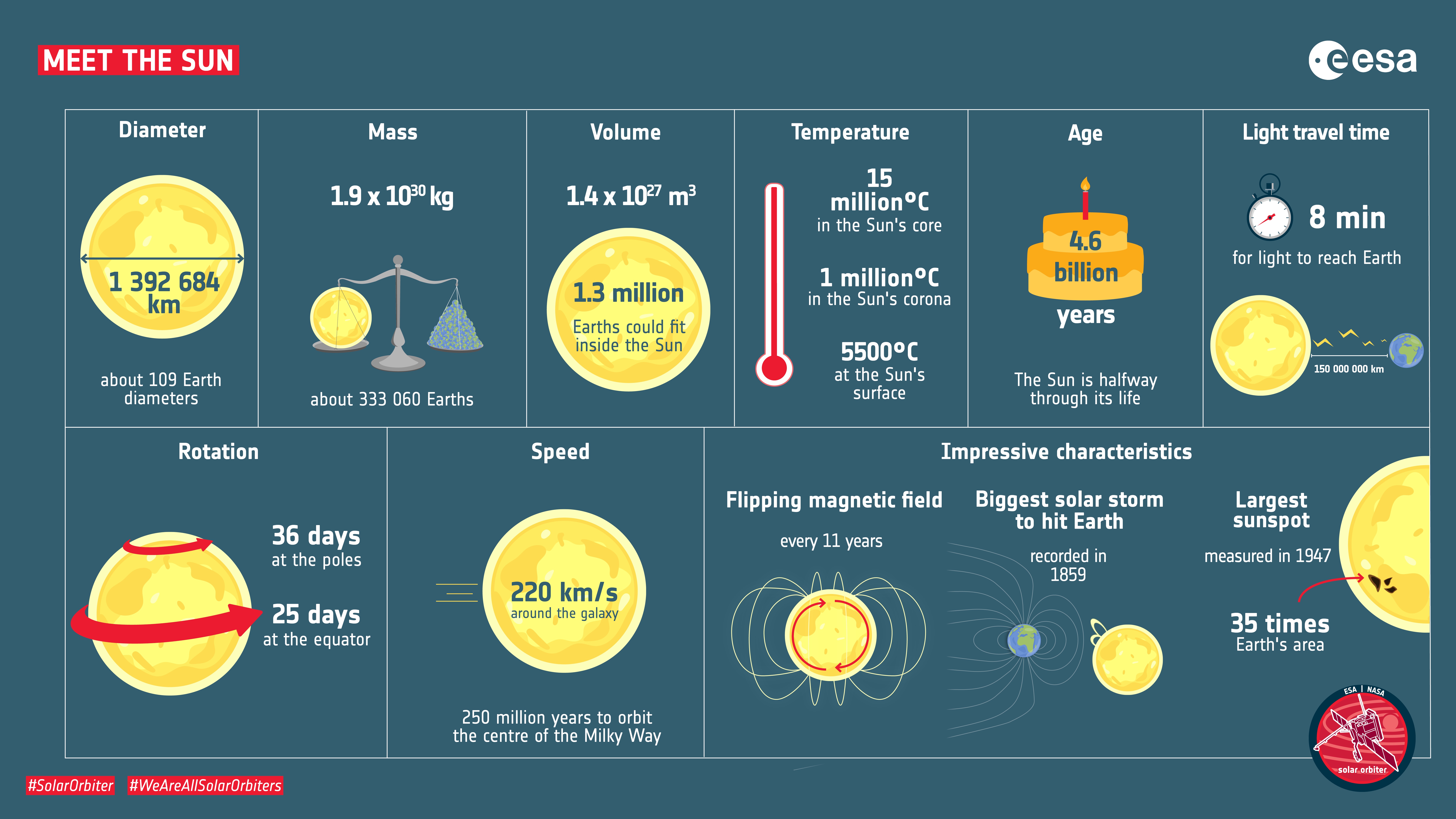Solar Orbiter
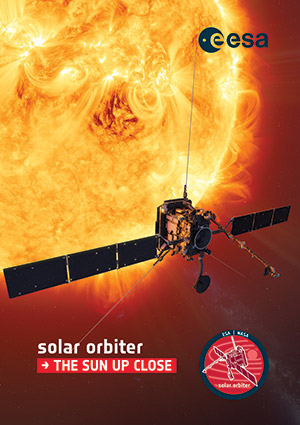
Image Credits: ESA/ATG medialab
Launched February 9, 2020
11:03 PM EST • ULA Atlas V
This mission is designed to perform unprecedented close-up observations of the Sun and from high-latitudes, providing the first images of the uncharted polar regions of the Sun, and investigating the Sun-Earth connection.
Learn more about Solar Orbiter by playing the videos below!
This is an artist’s impression of the Solar Orbiter spacecraft facing the Sun. credit: ESA/ATG medialab
Solar Orbiter is led by the European Space Agency (ESA) with strong NASA support (including the launch vehicle and facility). The prime contractor is Airbus Defence and Space in Stevenage, UK.
The spacecraft will travel into an elliptical orbit around the Sun coming as close to 26 million miles away everything five months.
This is closer than the orbit of the planet Mercury!
It will take just under two years to reach its initial operational orbit, taking advantage of gravity-assist flybys of Earth and Venus to enter a highly elliptical orbit around the Sun.
When Solar Orbiter reaches its fastest speed, it will remain in a position approximately fixed over the same region of the Sun’s atmosphere as the Sun rotates around its axis giving unique observations of our star.
The spacecraft will have an inclined orbit traveling above and below the plane of the solar system giving high resolution images of the Sun’s North and South poles. All of this provides a never before seen view of our Sun.
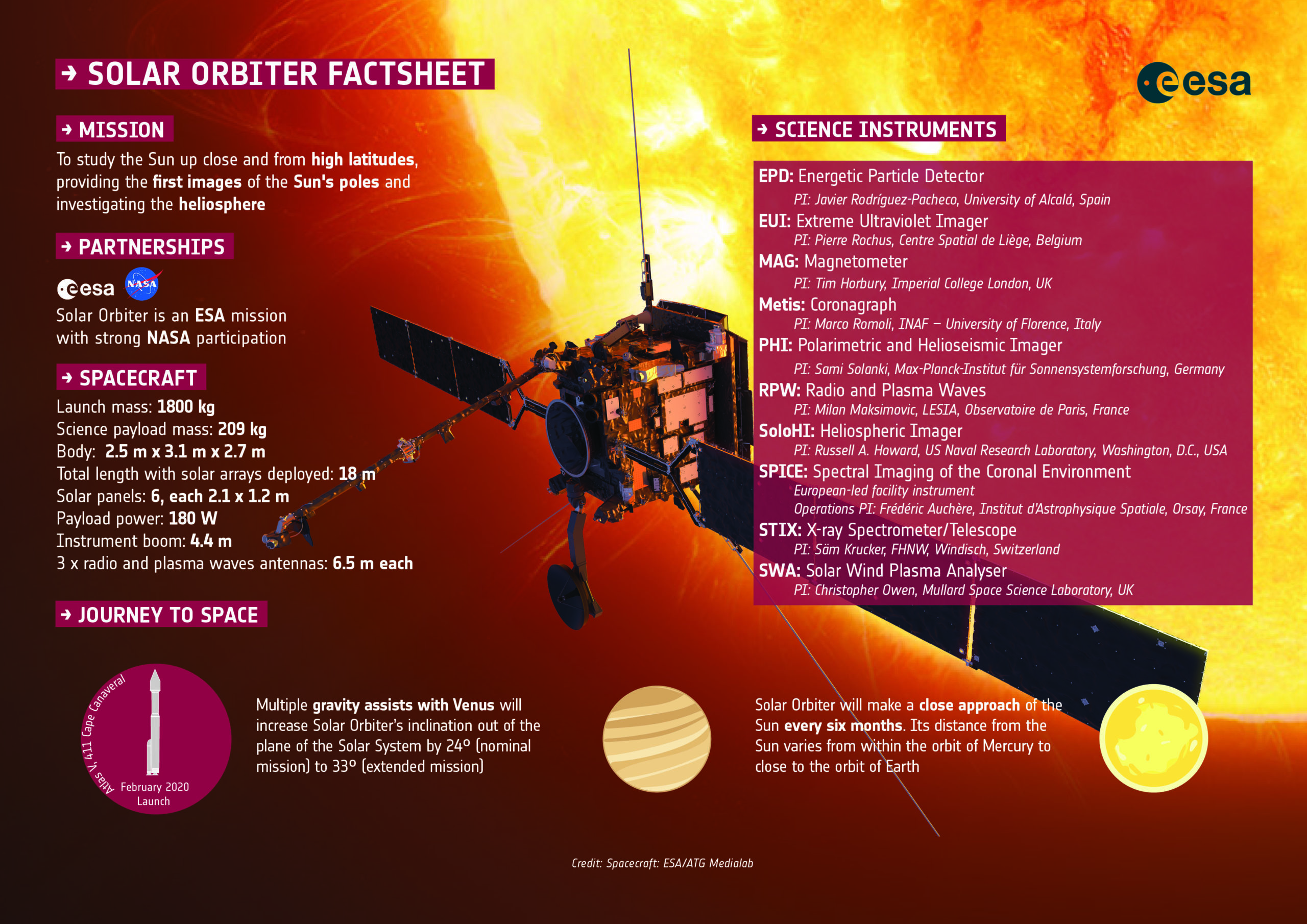
Solar Orbiter factsheet about the mission, partnerships, spacecraft, the science instruments and its journey to space. credit: ESA/ATG medialab
Solar Orbiter factsheet about the mission, partnerships, spacecraft, the science instruments and its journey to space. credit: ESA/ATG medialab
The spacecraft carries 10 state-of-the-art instruments.
Remote sensing payloads will perform high-resolution imaging of the Sun’s atmosphere – the corona – as well as the solar disc.
The other instruments are designed to measure the solar wind and the solar magnetic fields in the vicinity of the spacecraft. This will provide unique insight into how the Sun works in terms of the 11-year solar cycle, and how we can better predict periods of stormy space weather.
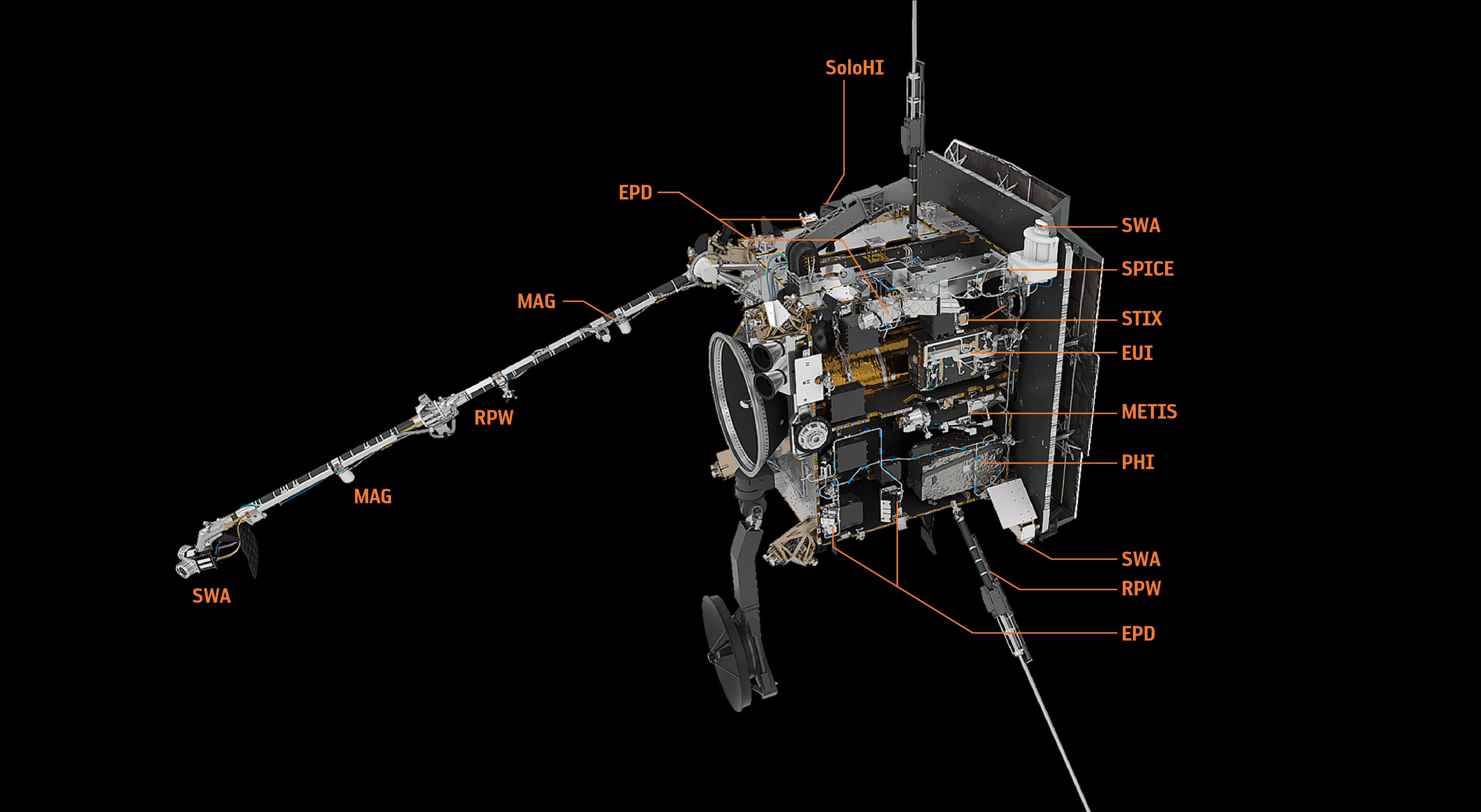
An illustration of the Solar Orbiter spacecraft with the 10 instruments labeled. credit: ESA/ATG medialab
Solar Orbiter follows in the legacy of ESA/NASA missions such as Ulysses (1990-2009) and SOHO (1995-present) and will also provide complementary datasets to NASA’s Parker Solar Probe that will allow more science to be distilled from the two missions than either could achieve on their own.
Solar Orbiter +
Parker Solar Probe
The ESA Media Lab and S. Poletti produced a great set of infographics that showcase many aspects of the mission, its challenges, and the science questions it will address along with how it will work with the Parker Solar Probe. These include:
Solar Orbiter: What’s New?
Solar Orbiter: Answering the Big Questions
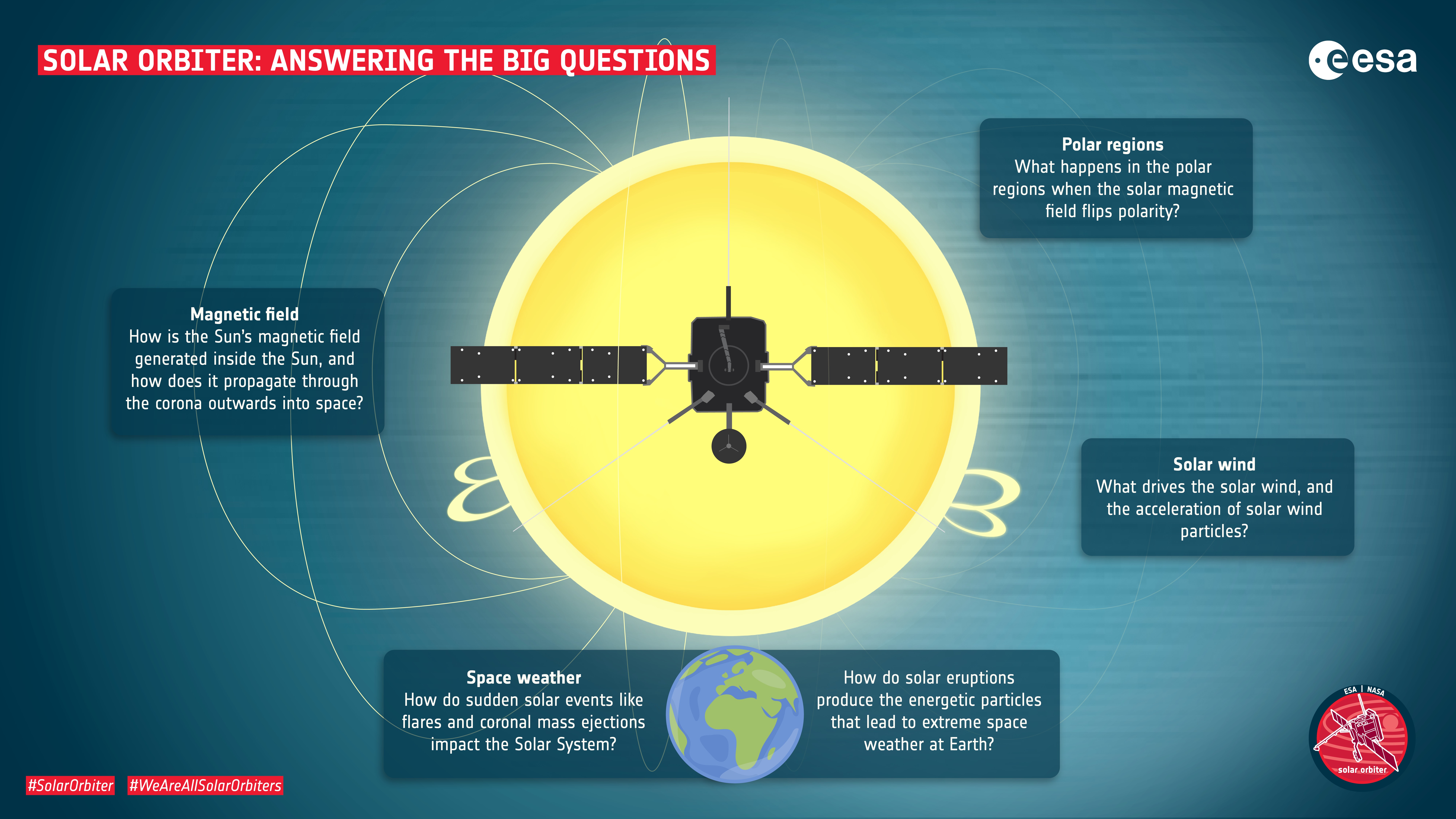
Solar Orbiter will address big questions in space science to help us understand how our star creates and controls the giant bubble of plasma – the heliosphere – that surrounds the whole Solar System and influences the planets within it. It will concentrate on four main areas of investigation. credit: ESA – S.Poletti
Solar Orbiter: Operating in Extreme Environments
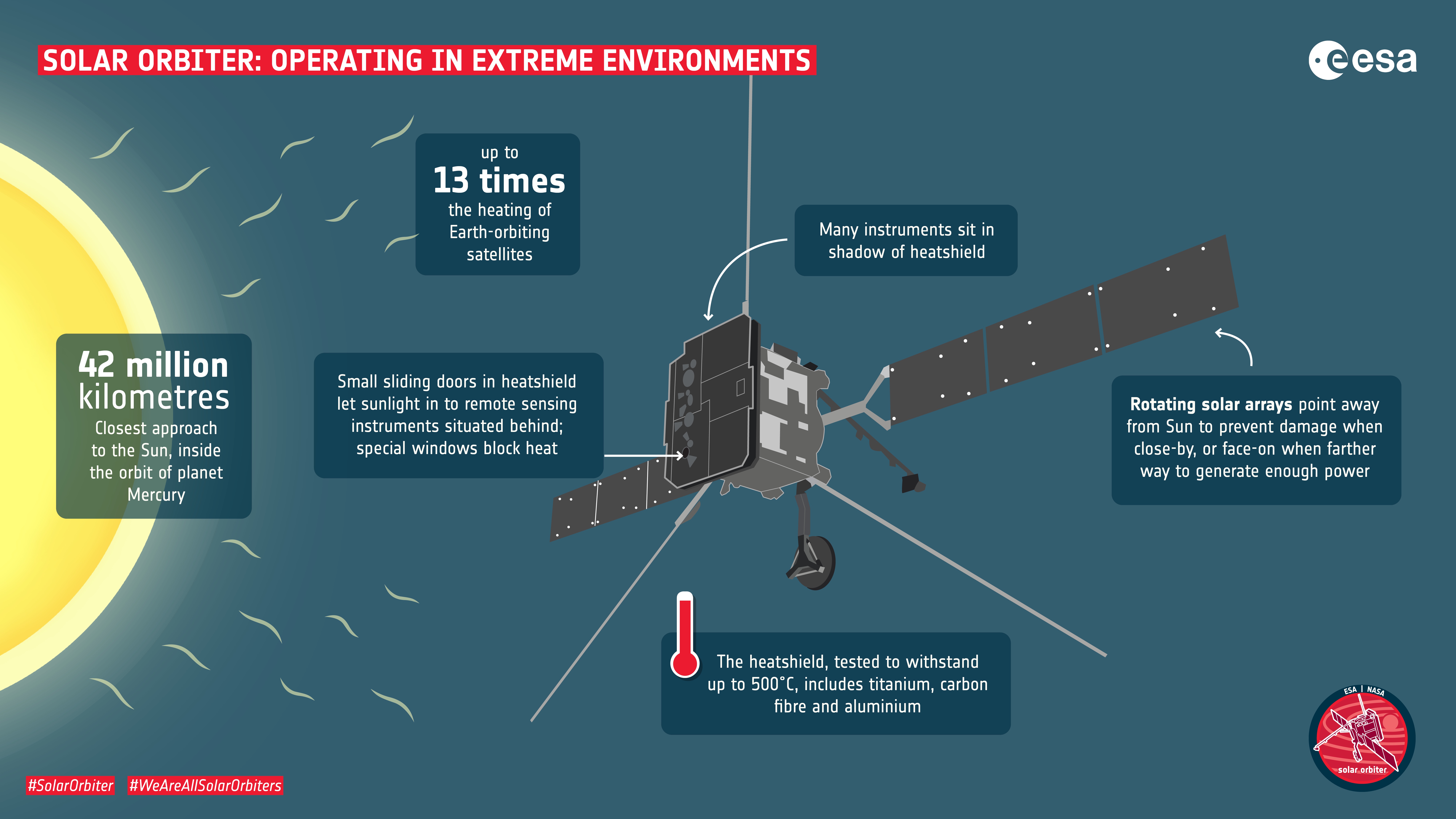
Solar Orbiter must operate for years in one of the most hostile regions of the Solar System. credit: ESA – S.Poletti
Solar Orbiter Instruments
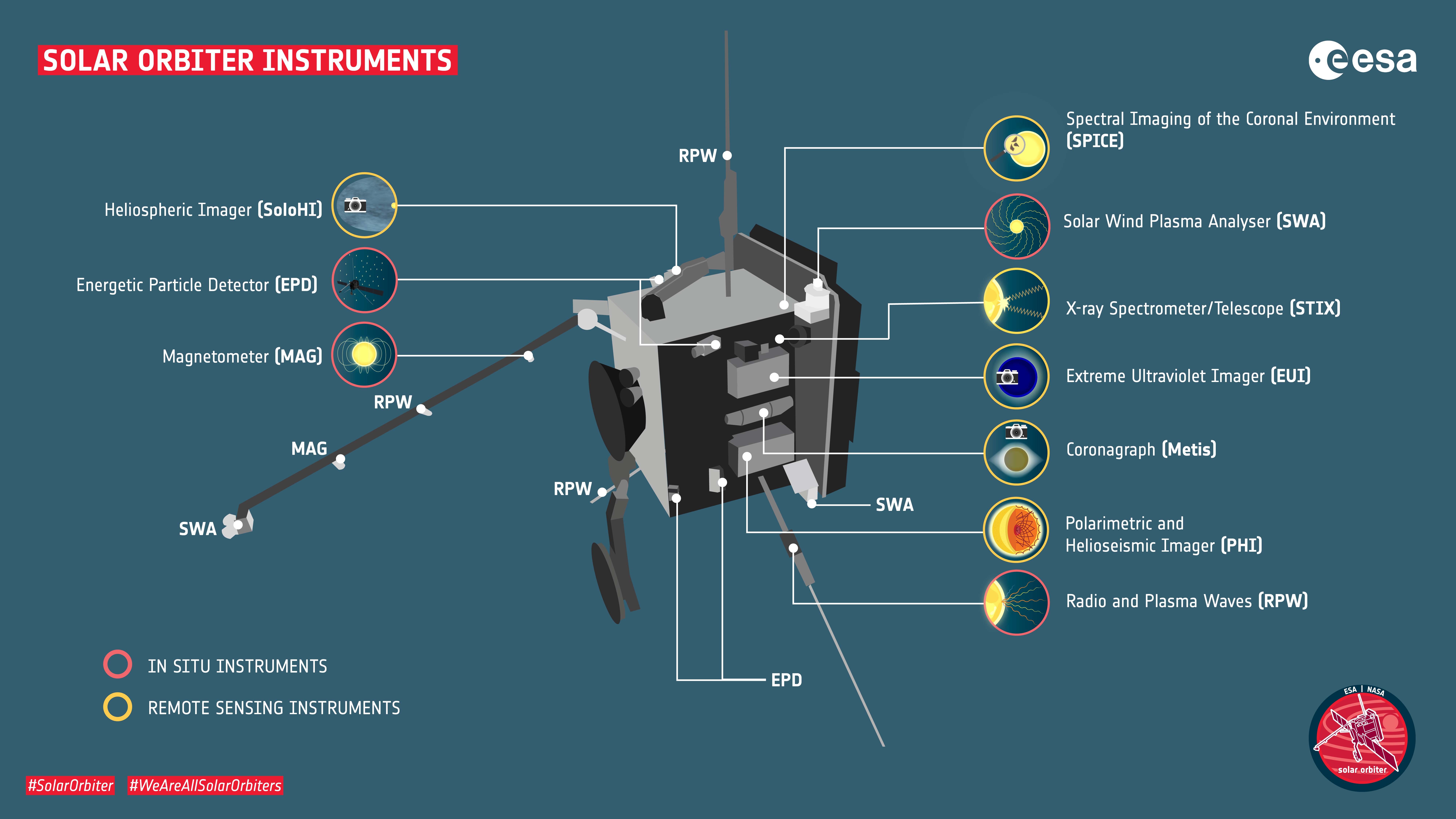
Solar Orbiter’s suite of ten science instruments that will study the Sun. There are two types: in situ and remote sensing. The in situ instruments measure the conditions around the spacecraft itself. The remote-sensing instruments measure what is happening at large distances away. Together, both sets of data can be used to piece together a more complete picture of what is happening in the Sun’s corona and the solar wind. credit: ESA – S.Poletti
Solar Orbiter Launch & Deployment Sequence
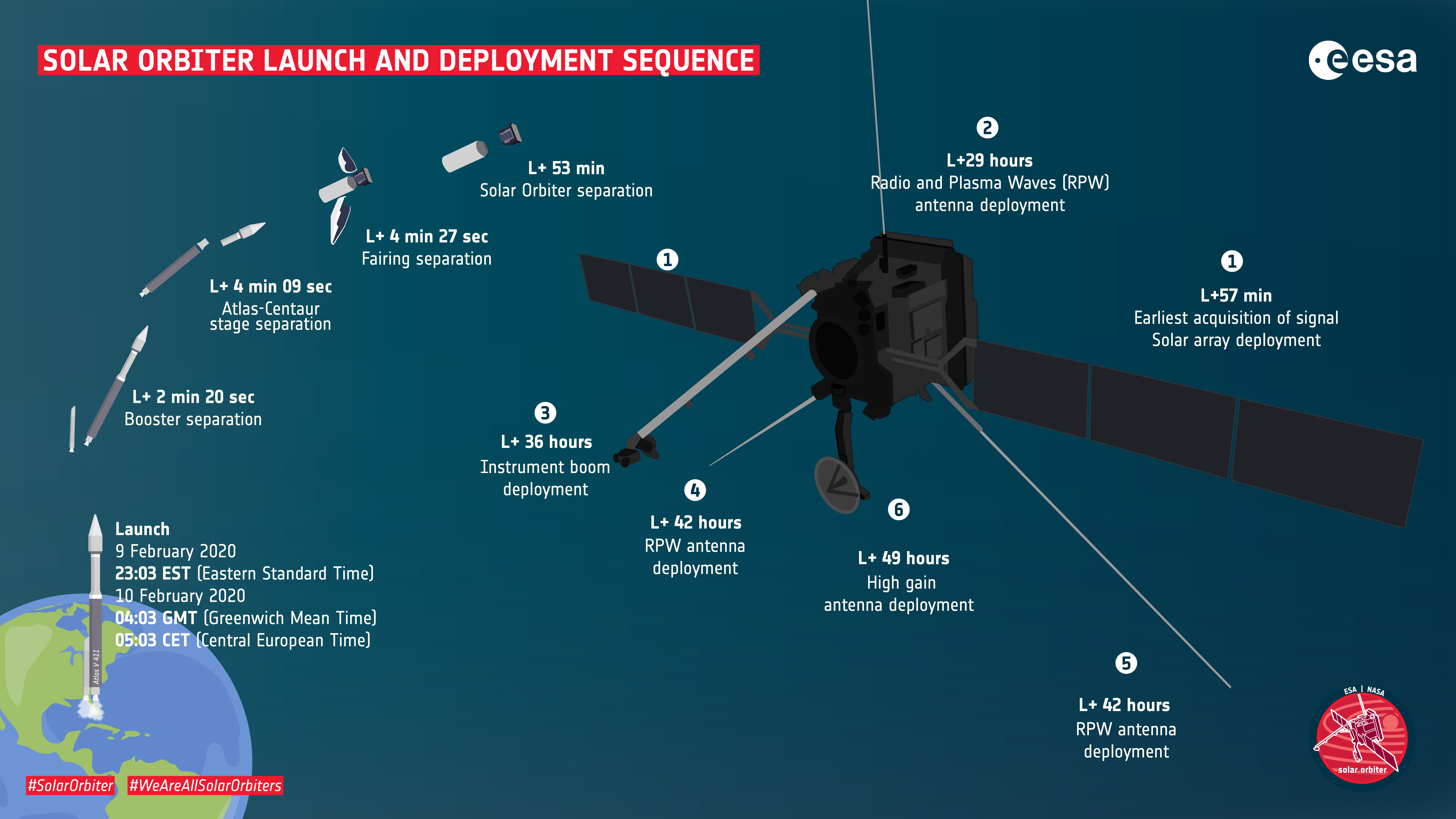
Solar Orbiter is scheduled to launch on an Atlas V 411 rocket from Cape Canaveral in Flordia, USA, at 05:03 CET on 8 February 2020 (23:03 EST on 9 February).
The spacecraft will separate from the launcher around 53 minutes after launch, followed by acquisition of spacecraft signal. In the days after launch, the instrument boom and antennas will be deployed.
credit: ESA – S.Poletti
Solar Orbiter: Journey Around the Sun
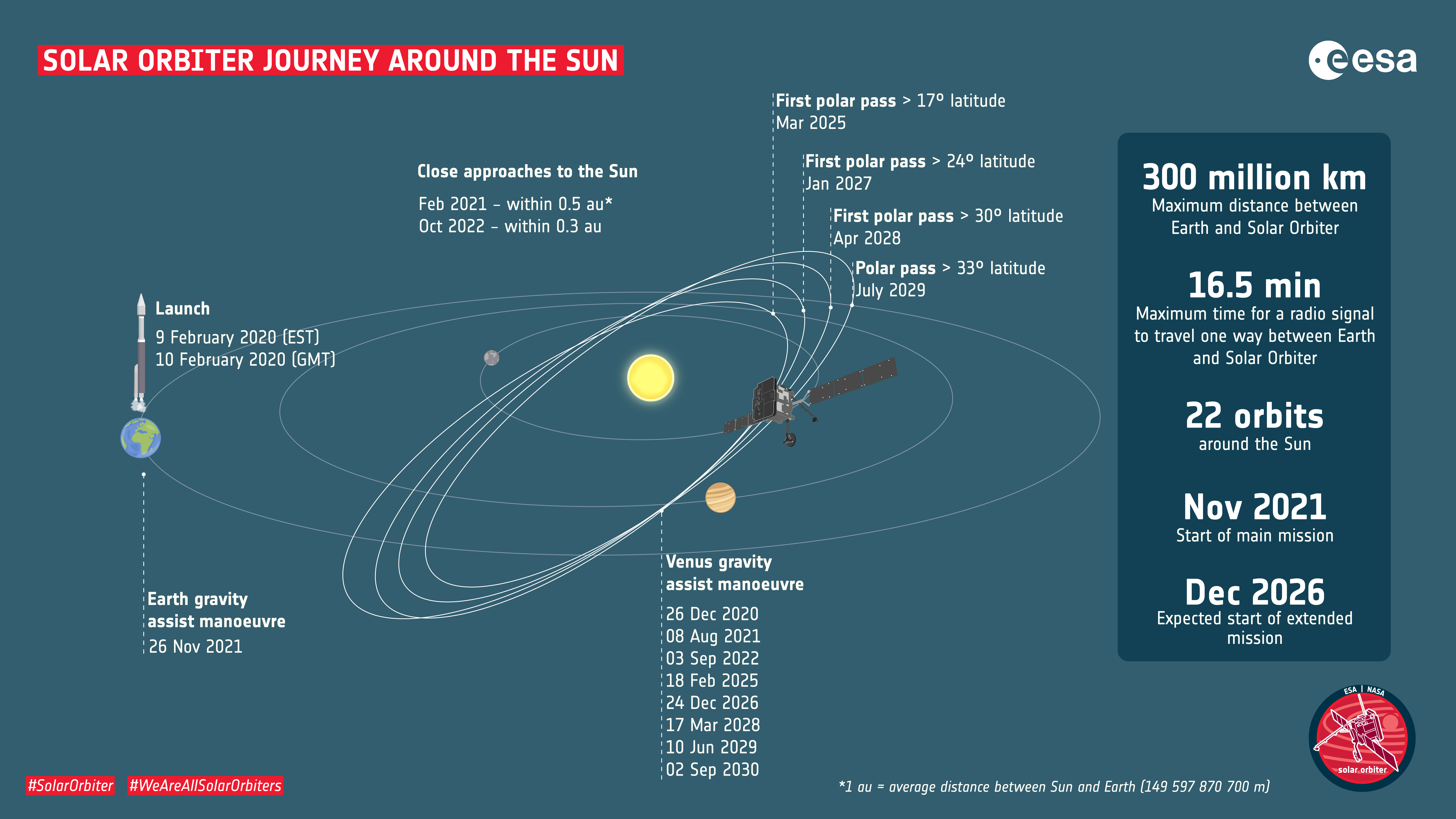
Solar Orbiter is scheduled to launch on an Atlas V 411 rocket from Cape Canaveral in Florida, USA, at 05:03 CET on 8 February 2020 (23:03 EST on 9 February).
Gravity assist manoeuvres at Earth and Venus will enable the spacecraft to change inclination to observe the Sun from different perspectives. During the initial cruise phase, which lasts until November 2021, Solar Orbiter will perform two gravity-assist manoeuvres around Venus and one around Earth to alter the spacecraft’s trajectory, guiding it towards the innermost regions of the Solar System. At the same time, Solar Orbiter will acquire in situ data and characterise and calibrate its remote-sensing instruments. The first close solar pass will take place in 2022 at around a third of Earth’s distance from the Sun. credit: ESA – S.Poletti
Extreme Exploration with Solar Orbiter & Parker Solar Probe
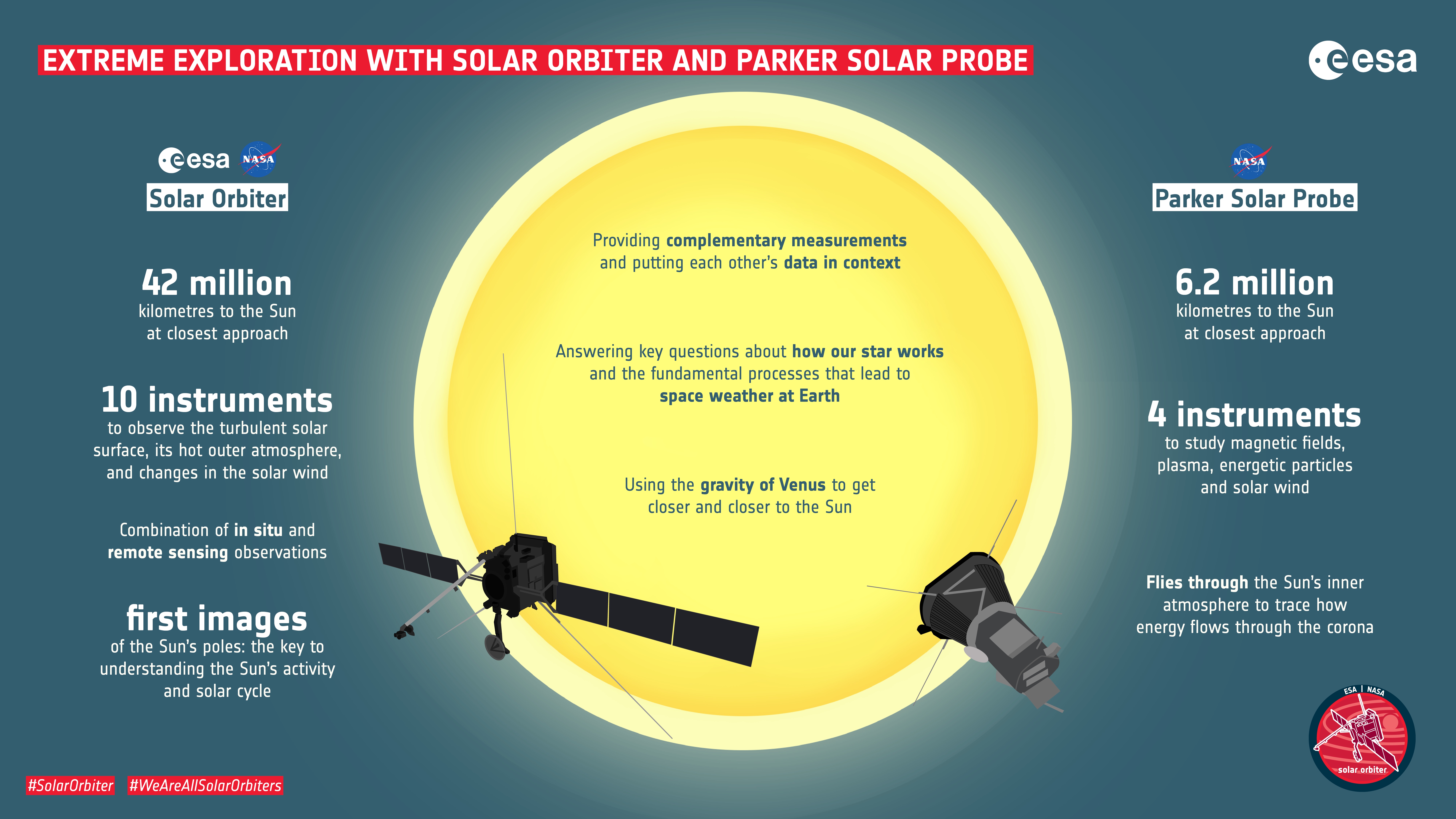
ESA’s Solar Orbiter will be one of two complementary spacecraft studying the Sun at close proximity: it will join NASA’s Parker Solar Probe, which is already engaged in its mission. credit: ESA – S.Poletti
Missions Studying the Sun
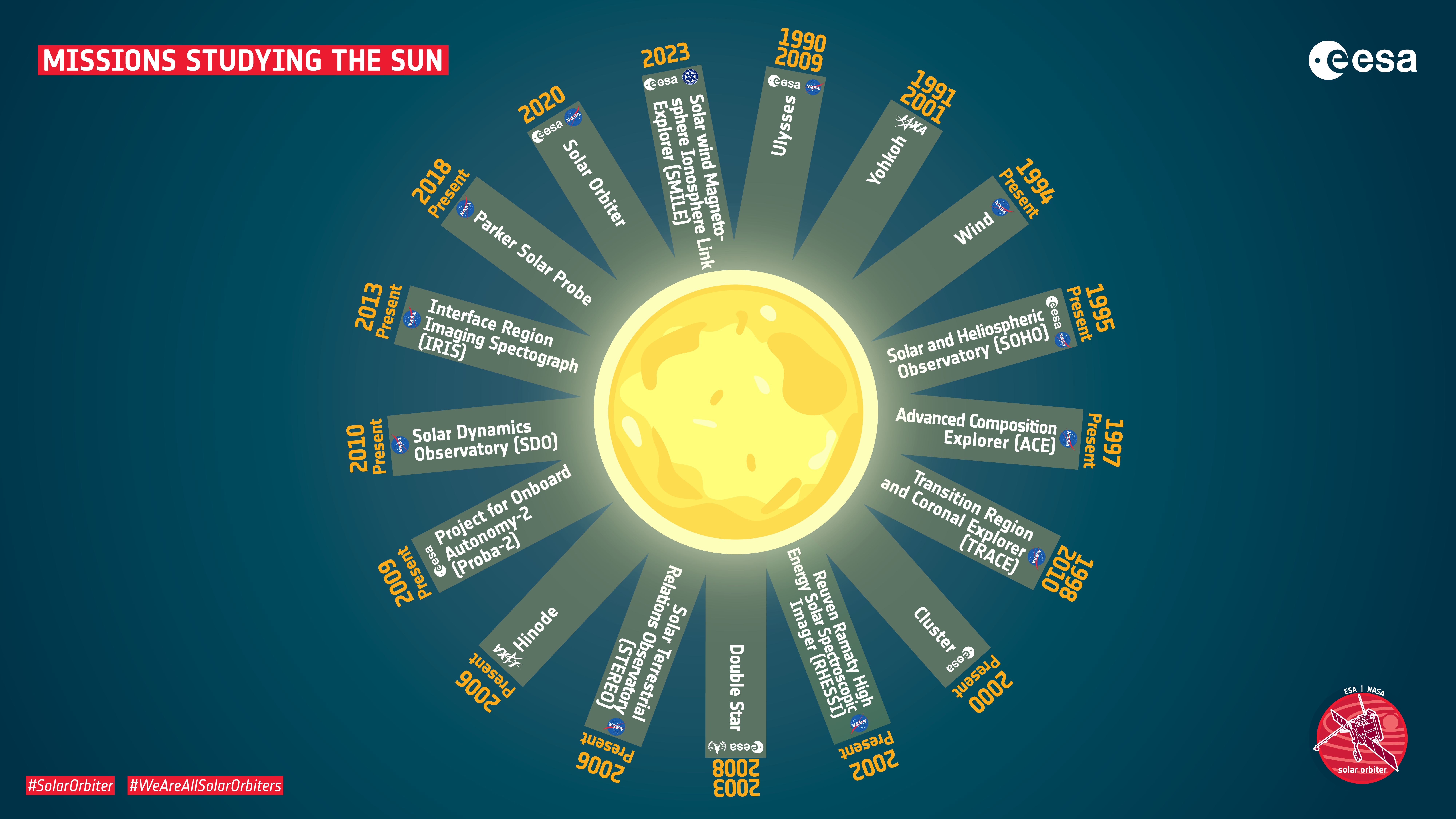
Overview of missions studying the Sun and solar wind, and the Earth-Sun connection. credit: ESA – S.Poletti
Anatomy of the Sun
Meet the Sun
For more information, news and multimedia content:
- ESA’s Solar Orbiter Mission website
- The Solar Orbiter brochure
- A look at Solar Orbiter’s path around the Sun


